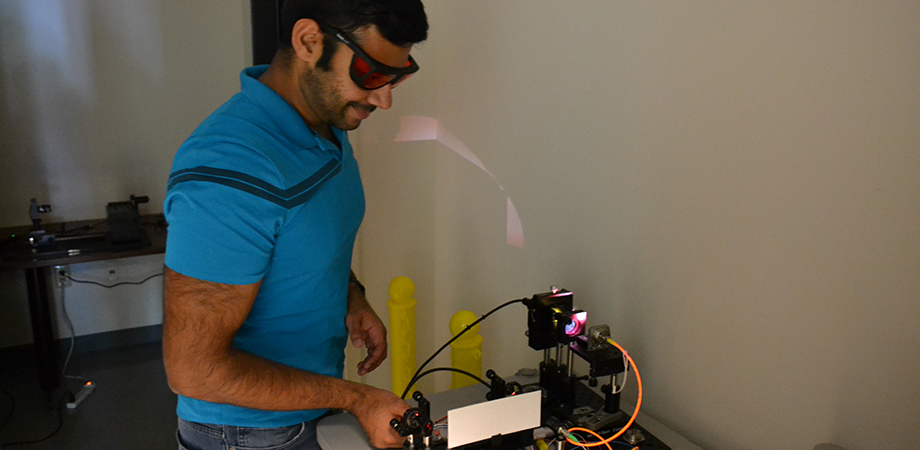Day in the Life of an SPIE Professional: Nishant Mohan

Following his role as an optical engineer for Bausch + Lomb, SPIE Senior Member Nishant Mohan is now responsible for business strategy, new product development, product marketing, and product life-cycle management of the OCT Division at Wasatch Photonics, a company that designs and produces instrumentation for optical coherence tomography (OCT), Raman, and other spectroscopy techniques.
How did you end up working in the optics industry?
In graduate school, my thesis research was on an optical imaging technique primarily used for eye imaging. I was immediately fascinated by the relationship of optics to other signal analysis tools and the omnipresence of optics in our lives. After my postdoctoral study at Harvard Medical School, I joined the vision care division at Bausch + Lomb to apply different types of optical and imaging methods for contact lens development. I progressed into a management role, and to this day I am fascinated by optics and its role in medicine.
What type of education is needed to work in the optics industry at entry level?
The optics and medical imaging industries bring in individuals with a variety of backgrounds and education levels. We have people with associate's degrees in optics and lasers, bachelor's and master's degrees in a variety of engineering and management disciplines, as well as PhDs with a focus on specific applications.
What are three skills, technical or soft, necessary to do your job?
Problem Solving. In my role at Wasatch Photonics, I need to have a strong understanding of all aspects of technology and business, from computer-aided designs to customer satisfaction metrics. However, the fundamental skills needed are the ability to understand the bigger problem we are trying to solve, break it into smaller pieces, and then apply available tools to reach the desired goal.
Learning Capacity. This may not fall under most skill lists, but in my opinion is one of the key differentiating factors for professionals today. In a rapidly changing environment, it is imperative to constantly learn and evolve-a commitment that requires both desire and discipline.
Empathy. Whether we are developing a new product or communicating to customers, teammates, or investors, the most critical factor is being able to truly understand where our stakeholders are and where they want to be. Only then we can be sure that our efforts are truly headed in the right direction.
Describe a typical recent day at the office.
Before heading to our Morrisville, North Carolina, facility, I spent about two hours this morning focusing on items of long-term strategic importance and reviewed my calendar and goals for the day. Then, at the office, I responded to emails and delegated items as needed, followed by a meeting with one of my direct reports. I keep one hour per week for face-to-face conversation with all of my direct reports. We use the time to focus on problem solving and to plan for immediate actions. After this meeting, I worked on number crunching in preparation for a monthly meeting where I will present the state of the business to my team.
Next, I collected data for an image-processing problem my team is working on to improve image quality. In midafternoon, I took a call from one of our customers about the current state of their project and some critical future steps. This was followed by a discussion with our key technicians related to manufacturing builds on our production floor.
Towards the end of the day, I skimmed through a few abstracts from journal email alerts on topics of interest, and dug a little deeper into an interesting publication on intraoperative optical coherence tomography. Next, I organized my thoughts around how to lead an upcoming group discussion at the SPIE Optics + Photonics conference to be most productive for the audience. I like to spend time on volunteer work whenever possible, because it is always an extra boost of energy.
While there is no such thing as a typical day, I hope this gives a flavor of the interpersonal, technical, and business activities I engage in to encourage the growth of individuals and our business.
| Enjoy this article? Get similar news in your inbox |
|



